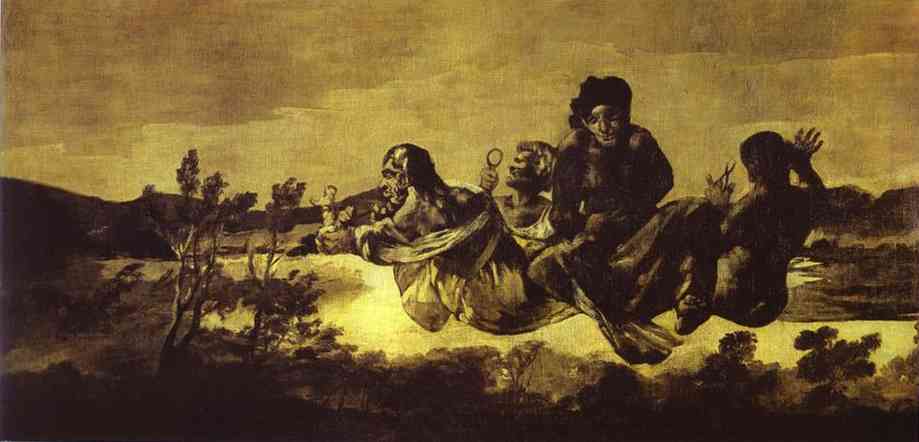Description
The painting Atropos (The Fates) by the artist Francisco De Goya Y Lucientes is a masterpiece that represents the three Fates of Greek mythology, who are in charge of weaving human destiny. This work, which measures 123 x 266 cm, was painted in 1819 and is one of the last made by the artist.
Goya's artistic style is characterized by his ability to capture reality in a raw and direct way, without embellishment or idealizations. In Atropos, this technique can be appreciated in the representation of the three female figures, which appear in the foreground and are portrayed with great precision in their gestures and expressions.
The composition of the painting is very interesting, since the three Moirai are represented in different poses and attitudes. The figure on the left, representing Lachesis, holds an open book and looks out at the viewer with a serene expression. The figure in the center, representing Clotho, is busy weaving the thread of life and her face reflects great concentration. The figure on the right, representing Atropos, holds a pair of scissors with which to cut the thread of life, and his gaze is cold and determined.
The color of the paint is another interesting aspect, since Goya uses a very reduced palette, based on dark and gray tones, which give the work a gloomy and melancholic air. Only the details of the Fates' dresses, which are decorated with gold and silver motifs, bring a touch of light and shine to the composition.
The history of the painting is also very interesting, since it is known that it was commissioned by the Duke of Osuna, one of Goya's patrons, to decorate his palace in Madrid. However, the work was never publicly exhibited and remained in the Duke's family's private collection until it was acquired by the Prado Museum in 1886.
Finally, a little-known aspect about the painting is that, despite its apparent simplicity and sobriety, it hides a great symbolic and philosophical charge. The Fates represent human destiny, but also the inevitability of death and the transience of life. Goya, who at that time was already very ill and close to death, expressed in this work his pessimistic and disenchanted vision of the world, in which man appears as a powerless being before the forces that govern his existence.

